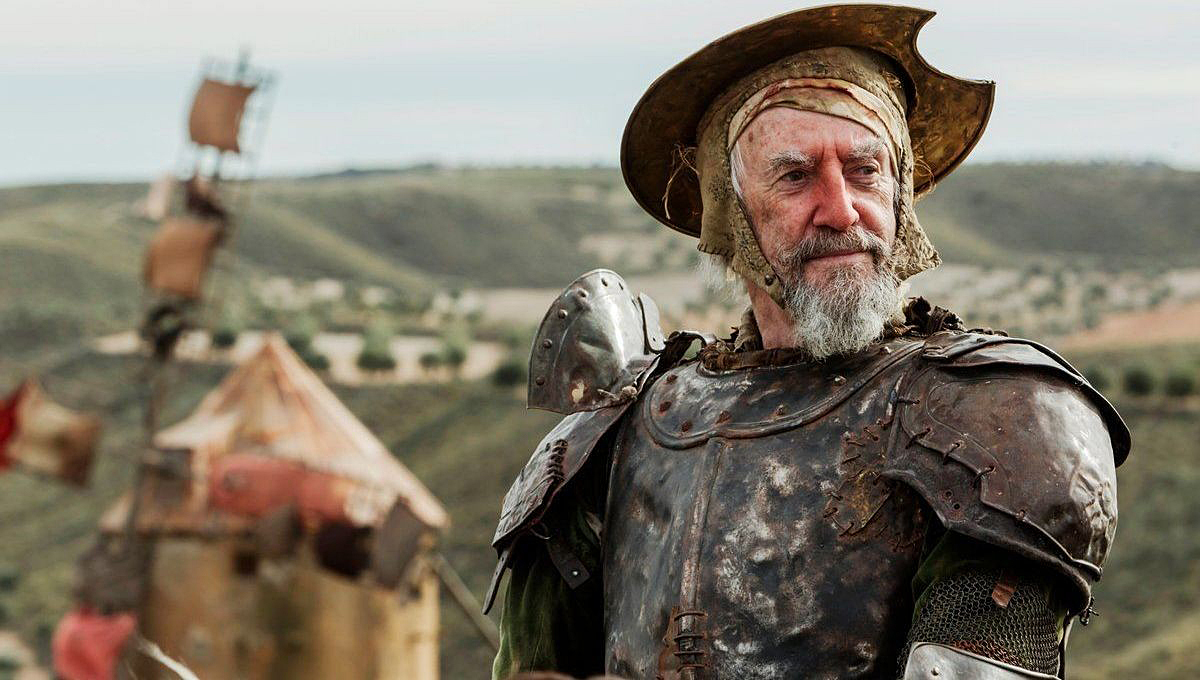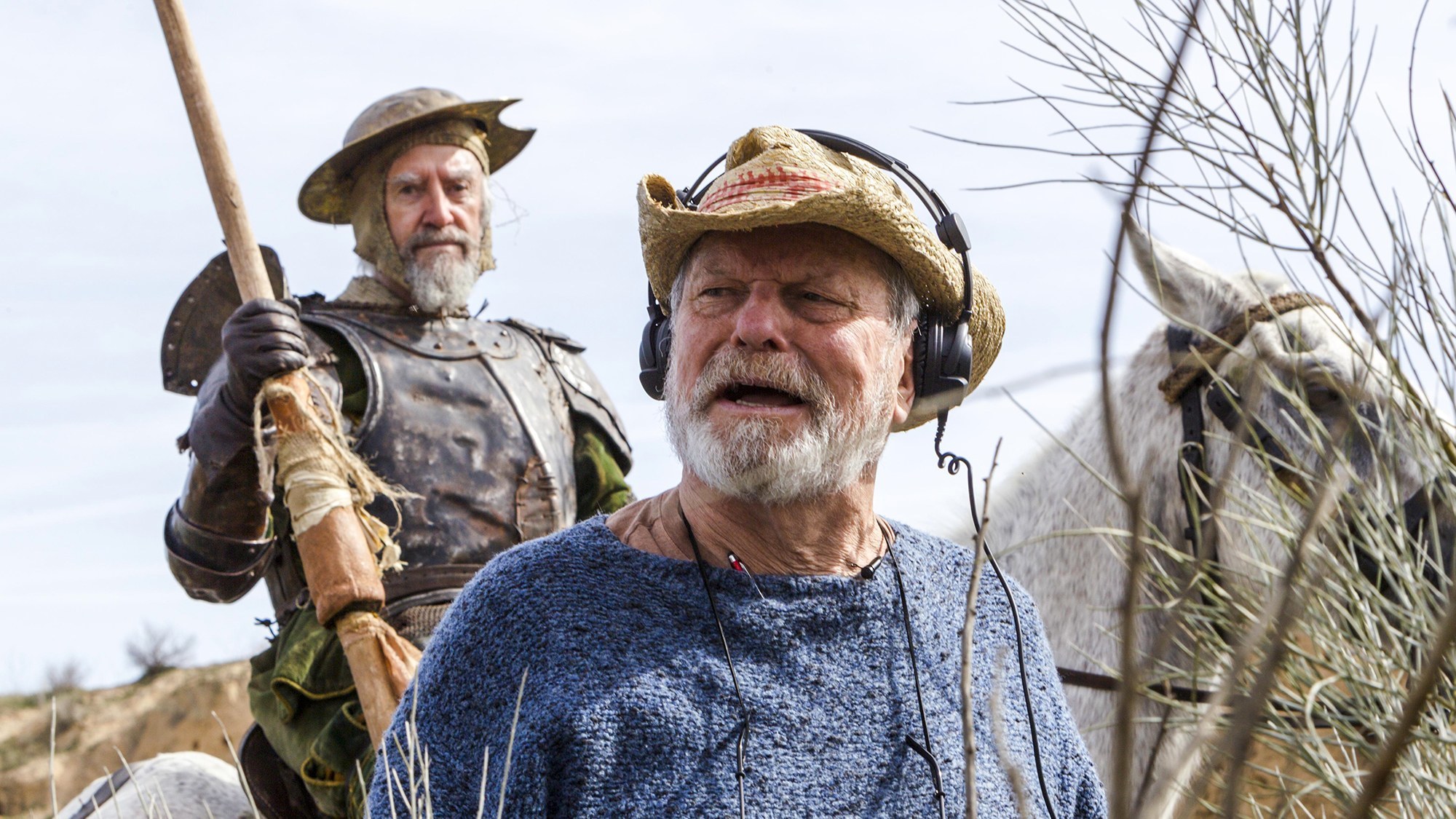SPONSORED BY: ASC Master Class
In two separate conversations, cinematographer Nicola Pecorini (Part I) and director Terry Gilliam (Part II) discuss their collaboration on the long-gestating feture The Man Who Killed Don Quixote, in which egotistical filmmaker Toby Grisoni (played by Adam Driver) is drawn into the elaborate delusions of an old Spanish shoemaker (Jonathan Pryce) whom he once convinced to play the role of Cervantes’s Don Quixote for a student thesis project. Fantasy and reality intertwine, until Toby finds himself tangled in an existential knot of his own making.
About the Project
Over the past 30 years, cinematographer Nicola Pecorini and director Terry Gilliam have collaborated on six feature films, including Fear and Loathing In Las Vegas, Tideland and The Zero Theorem — seven if you count their first try at making Quixote. That tragic tale is told by the 2002 documentary feature Lost In La Mancha, wherein all manner of mishaps befall the doomed production, including jet fighters buzzing the location mid-take, injured actors, and a flash flood that washes away one of their sets.
Undaunted, Gilliam continued to develop Quixote in what might be described as his own Quixotic pursuit — with Pecorini as his Sancho — perhaps recalling the memory of Orson Welles’s 12-year struggle to make a straight and ultimately incomplete adaptation of Miguel Cervantes’s 17thcentury novel. In 2016, Gilliam’s film re-entered production with Adam Driver in the role of Toby Grisoni, a cynical commercial director who finds himself swept up in the outrageous delusions of an old Spanish shoe-maker (played by Jonathan Pryce) who believes himself to be the actual Don Quixote.

The film was serviced out of Technovision Rome. Pecorini used an Alexa STX and two Alexa Minis with the same Cooke Taylor-Hobson anamorphic lenses that Vittorio Storaro, ASC, AIC used to shoot Apocalypse Now.“They are quite an amazing set of lenses — the color and the way they take flares is quite unique,” remarks Pecorini. “It was a pretty straightforward package. Most of the time the A Camera was on a mini-jib that I operate myself with a Weaver-Steadman [camera mount].”
Pecorini leaned into a more realistic approach to photographing Quixote, largely eschewing the expressive visual touches that marked his previous collaborations with Gilliam. “I always try to be as unobtrusive as possible. If the cinematography stands alone, it doesn’t serve the movie,” the cameraman opines.
A different route was taken for Toby’s movie-within-the-movie, a student film adaptation of Quixote that catapulted him to fame, and continues to haunt him and the provincial Spanish villagers he cast in it. Pecorini and Gilliam wanted the film to feel special and different from its encapsulating narrative, so they decided to shoot it in wide-angle black-and-white. “My reference for it was an amazing movie from the 1960s called I Am Cuba,” says Pecorini. “It was all shot in wide angle, 16mm, black-and-white, 1.33. It’s fantastic. We shot [Toby’s movie] with a GoPro, of all cameras.”
Don Quixote was finished by Chema Alba at Deluxe Labs in Madrid. “We mainly followed my original guidelines,” Pecorini remarks. “Overall it was a pretty smooth and ordinary process. The main challenge was to even out the exterior scenes shot in extremely variable weather conditions over more than one day, but having twenty years to plan for something sometimes gives you a clear idea of how to do it.”
About the Director

Terry Gilliam a director, screenwriter, animator, actor and member of Monty Python’s Flying Circus. He is known for directing the fantastical films Brazil (1985), The Adventures of Baron Munchausen (1988), The Fisher King (1991), 12 Monkeys (1995) and Fear and Loathing in Las Vegas (1998), and is ranked among the top film directors of the 20th Century. He has won many awards and prizes and has lost even more.
Follow American Cinematographer on Facebook, Instagram and Twitter.

American Cinematographer interviews cinematographers, directors and other filmmakers to take you behind the scenes on major studio movies, independent films and popular television series.
Subscribe on iTunes


